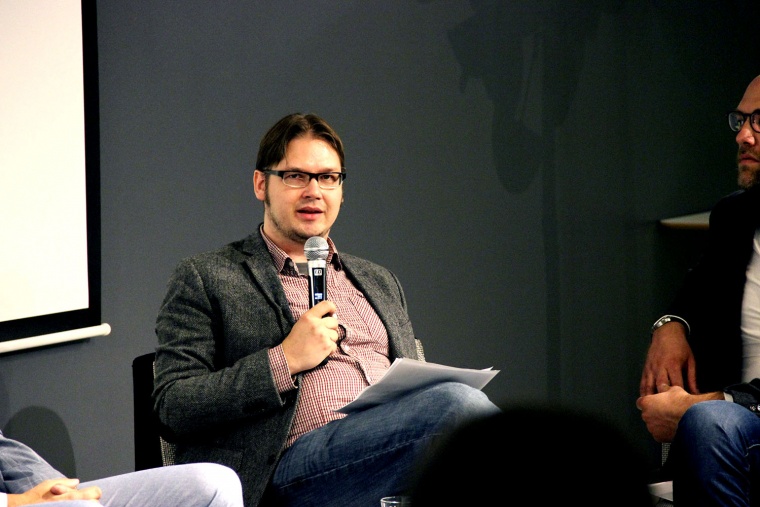Nordic and Baltic historian: “Rationality unites us”

“The most significant value shared between the Nordic and Baltic countries is the shared belief in the desirability of rational solutions. The importance of this should not be underestimated, not least in today’s world”, says Mart Kuldkepp, a scholar focused on 20th-century Scandinavian and Baltic political history, with a particular interest in Baltic–Scandinavian contact and the transnational history of the Baltic Sea Region.
NIB Newsletter interviewed Mart Kuldkepp about how he views the current situation between the Nordics and Baltics and how the area could further develop into a more prosperous region. Currently, Dr Kuldkepp works as Associate Professor of Scandinavian History and Politics at University College London (UCL).
How would you define the much-talked about “Nordic identity”?
The Nordic identity is a living and changing phenomenon that has meant many different things to different people at different times. This makes it hard to pin down with any measure of exactness.
What makes the Nordic identity special, however, is how successful it has been as both a domestic and an international brand. Perhaps uniquely for a regional identity, it has shown impressive resilience and power of attraction not just over decades, but over centuries. At a time when other similar supranational identities – for example, “European” – seem to be faltering, the Nordic identity could provide us with something to learn from.
What are the most prominent values that the Nordics and Baltics share?
I would encourage anyone interested in this question to look at the World Values Survey, which has documented the value-related similarities and differences between different countries over many years, most recently in 2016.
We can see that the Nordics and Baltics certainly share a penchant for rational, rather than traditional, values, making both groups firmly anchored in the European Protestant tradition (which, interestingly, also includes Catholic Lithuania). I would therefore say that our most significant shared value is the shared belief in the desirability of rational solutions.
However, in some ways, the Nordics and the Baltics remain far apart, especially when we look at the “survival vs self-expression axis”. Perhaps unsurprisingly, people in the Baltics still seem to be far more focused on everyday survival than those in the Nordics!
 Mart Kuldkepp spoke at the seminar Norden as a Concept and Influence, an event that was part of the Baltics – 100 Years festival program, organised by the Nordic Culture Point in Helsinki at the end of August 2018. The particular focus of the seminar was the Baltic States and their – assumed or real – Nordicness. Photo: Henric Öhman, Nordic Culture Point.
Mart Kuldkepp spoke at the seminar Norden as a Concept and Influence, an event that was part of the Baltics – 100 Years festival program, organised by the Nordic Culture Point in Helsinki at the end of August 2018. The particular focus of the seminar was the Baltic States and their – assumed or real – Nordicness. Photo: Henric Öhman, Nordic Culture Point.
What then divides the Nordics and Baltics, or what can be still seen as the biggest difference?
We are divided by history and, to some extent, by geography, both of which have left their mark on the identities and mentalities in the Nordic and Baltic countries. Looking just at the 20th century, the three Baltic states became a part the Europe crushed by the armies of both Hitler and Stalin. This is something that, thankfully, was not replicated in Scandinavia, even if Denmark and Norway did suffer under German occupation, and Finland narrowly escaped the fate of the Baltics.
It is understandable that the Scandinavian states, mostly spared from the First World War and the post-war chaos of 1918–1920 on the former Eastern Front, and lucky to escape the Second World War relatively unscathed, cannot fully understand the often post-traumatic mindset of the Baltics. Curiosity and education are, however, the best way of building bridges, and a willingness to engage seriously with the Baltic point of view would remove many stumbling blocks in Nordic–Baltic relations.
What could the Nordics learn from the Baltics?
I think it is more important to learn about the Baltics than it is to learn from the Baltics! What I do think is needed from both sides is mutual respect and willingness to see each other’s points of view, as well as some sense of solidarity and recognition that cooperation is what will, in the end, take us forward in all kinds of ways.
How do you see the future of the Nordic–Baltic region? What makes it competitive, and in what fields could the region still develop?
It is not clear to me whether the Nordic–Baltic region actually exists. There are certainly a number of actors who are trying to “talk it into existence”, to use Iver B. Neumann’s much-quoted formulation, but to my mind, the Nordic region and the Baltic region remain mostly separate entities. Of course, increased convergence in the future is both probable and desirable.
Regional integration would certainly be aided by large-scale infrastructure projects, such as the proposed tunnel under the Gulf of Finland linking Helsinki and Tallinn. At present, it is also increasingly aided by a deepening recognition – especially in Scandinavia – of the shared geopolitical challenges that we have to live with.
In terms of increasing competitiveness, cooperation inside international organisations, such as the EU and the UN, is certainly something that should be developed further. From a purely bilateral point of view, increased digitalisation of public services in Scandinavia – as has long been the case in Estonia – could allow us to integrate to a degree that would facilitate and ease all manner of further cooperation across the Baltic.